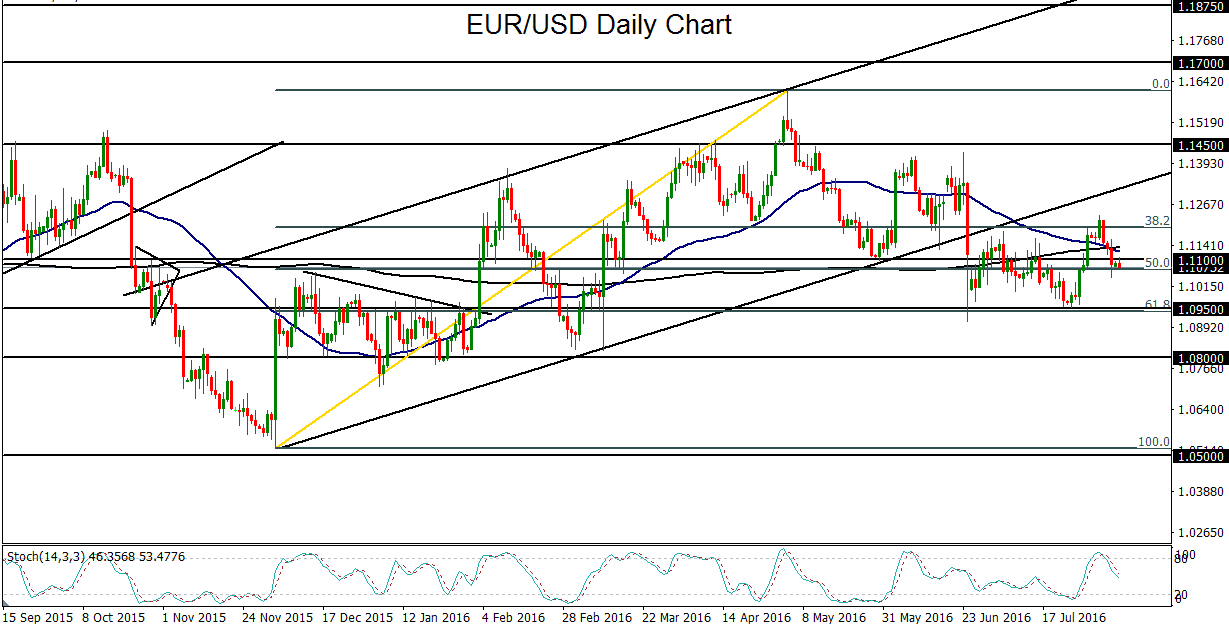The US dollar remained buoyant on Monday, extending its climb from late last week after a significantly better-than-expected US employment report boosted both the dollar and the possibility of a Fed rate hike this year.
Friday’s non-farm payrolls (NFP) report showed a second consecutive month of stellar results for US employment, with 255,000 jobs added in July against prior consensus expectations of 180,000. Average hourly earnings were also better than expected, rising by 0.3% versus the previous 0.2% forecast. Additionally, June’s already-buoyant 287,000 NFP figure was revised even higher to 292,000, and May’s painfully disappointing 11,000 was re-revised up to 24,000.
These very optimistic results once again jumpstarted recently waning expectations of a potential 2016 Fed rate hike, particularly since the jobs data extended positive sentiment from the previous month. While continuing concerns about overall economic growth, low inflation, and the global trend of central bank easing should continue to weigh on the Fed’s decision-making, two consecutive months of employment data that beat expectations by such a large margin will be hard for the Fed to ignore.
In the case of the EUR/USD currency pair, the rebound in Fed expectations and surge in the US dollar can be placed in stark contrast with the likely trajectory of the European Central Bank’s (ECB) monetary policy and that of the euro currency. Although the ECB opted to keep policy unchanged late last month, the central bank is expected to implement more easing in coming months, especially after the Bank of England fulfilled market expectations last week by cutting interest rates to a new record low. The next policy meetings for both the ECB and Fed are scheduled for September.
The potential continuation of such monetary policy divergence between the ECB and Fed is likely to continue weighing on the euro and supporting the dollar, which could lead to further losses for EUR/USD. From a technical perspective, EUR/USD continues to trade just below the key 1.1100 level after last week’s NFP-driven fall. The 50-day moving average has just tentatively crossed below the 200-day moving average, indicating a significantly bearish technical bias. The currency pair also continues to trade below a large parallel uptrend channel extending back from late last year, which was broken down in the immediate aftermath of late June’s Brexit outcome. With any continued downside momentum below 1.1100, the next major support target is around the 1.0950 level, which is both a key support level from late July as well as the 61.8% Fibonacci retracement level of the noted uptrend from late last year. Any further breakdown below 1.0950 support should once again target the key 1.0800 support objective.
Friday’s non-farm payrolls (NFP) report showed a second consecutive month of stellar results for US employment, with 255,000 jobs added in July against prior consensus expectations of 180,000. Average hourly earnings were also better than expected, rising by 0.3% versus the previous 0.2% forecast. Additionally, June’s already-buoyant 287,000 NFP figure was revised even higher to 292,000, and May’s painfully disappointing 11,000 was re-revised up to 24,000.
These very optimistic results once again jumpstarted recently waning expectations of a potential 2016 Fed rate hike, particularly since the jobs data extended positive sentiment from the previous month. While continuing concerns about overall economic growth, low inflation, and the global trend of central bank easing should continue to weigh on the Fed’s decision-making, two consecutive months of employment data that beat expectations by such a large margin will be hard for the Fed to ignore.
In the case of the EUR/USD currency pair, the rebound in Fed expectations and surge in the US dollar can be placed in stark contrast with the likely trajectory of the European Central Bank’s (ECB) monetary policy and that of the euro currency. Although the ECB opted to keep policy unchanged late last month, the central bank is expected to implement more easing in coming months, especially after the Bank of England fulfilled market expectations last week by cutting interest rates to a new record low. The next policy meetings for both the ECB and Fed are scheduled for September.
The potential continuation of such monetary policy divergence between the ECB and Fed is likely to continue weighing on the euro and supporting the dollar, which could lead to further losses for EUR/USD. From a technical perspective, EUR/USD continues to trade just below the key 1.1100 level after last week’s NFP-driven fall. The 50-day moving average has just tentatively crossed below the 200-day moving average, indicating a significantly bearish technical bias. The currency pair also continues to trade below a large parallel uptrend channel extending back from late last year, which was broken down in the immediate aftermath of late June’s Brexit outcome. With any continued downside momentum below 1.1100, the next major support target is around the 1.0950 level, which is both a key support level from late July as well as the 61.8% Fibonacci retracement level of the noted uptrend from late last year. Any further breakdown below 1.0950 support should once again target the key 1.0800 support objective.

Latest market news
Today 05:30 PM
Today 04:41 PM
Today 04:30 PM
Today 02:15 PM
Today 02:07 PM



